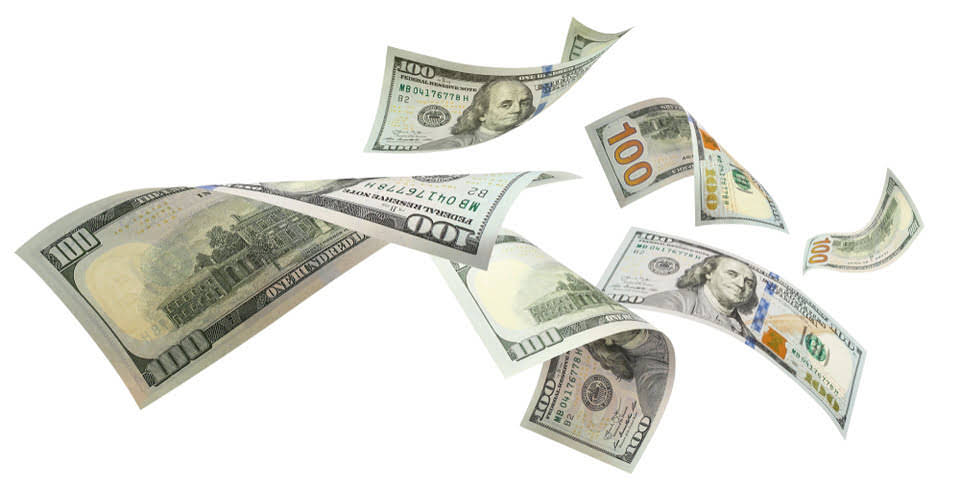Content

An invoice signifies the delivery of goods or compilation of services. An invoice is a request for payment that contains information necessary to remit payment to the issuer. Normally that would include the issuer’s name, address, terms of payment and if necessary an account number. The invoice also is given a number – a unique key identifier with respect to the issuer. Are you looking for a pro forma income statement template Excel for your business? Discover the definition of the pro forma income statement, its purpose, how to create a pro forma statement and free pro forma income statement template Excel to download. When a supplier sends an invoice to the client, the client puts it into their books as a bill.
It notes the product and quantity shipped, the terms of shipment — collect or prepaid — and the trailer or carrier vehicle number. The carrier’s driver reviews and signs the bill of lading when he picks up the cargo from the seller’s warehouse or plant. Upon delivery of the shipment, the buyer reviews the contents and signs the bill of lading, confirming receipt. Any differences, such as damaged or missing pieces, should be noted on the bill of lading before the carrier leaves the buyer’s premises with the signed copy. A bill of lading might also note batch numbers and the product’s country of origin.
Freelancers and independent contractors can encourage clients to pay quickly and easily by following these invoicing practices.
Like an invoice, it’s also issued and received before any payment is exchanged. If you send your client an invoice, it’s unlikely that you’ll need to send a bill, too.
- Invoice numbers are essential for the tracking of invoices, and they allow invoices to be referenced and located easily in the future when dealing with clients and potential audits.
- If you need a paper copy of your invoice, the quickest and easiest way is to download and print one.
- You can also scan documents with your phone’s camera and process them into bills or send them to your inbox.
- An invoice is a document that maintains a record of a transaction between a buyer and seller, such as a paper receipt from a store or online record from an e-tailer.
- Once you’ve created an invoice and sent it to your customer, it then becomes a bill from the customer’s viewpoint.
Having a record of all invoices issued and collected makes it easier for businesses to report their income. Dedicated invoicing software can help you keep a record of all your invoices. Invoices are a critical element of accounting internal controls. Charges on an invoice must be approved by the responsible management personnel.
Invoice vs. Bill
In other words, an invoice is a request for payment, whereas a receipt is proof of payment. So we can say that both invoice and receipt are tools for making a transaction but serves different purposes. The major difference is that a credit invoice is issued by the seller when the sold goods are returned, whereas a debit invoice is issued by the buyer when he returns the purchased goods. The purpose of both types of invoices is the same, i.e., to keep records of the goods returned. An invoice is an itemized list of products sold or services provided, along with the amount of money owed for each line item, and the total amount of money owed. An invoice is sent from the biller to the client, in hopes of being paid within a certain amount of time.
- First of all, it ensures that there are concrete terms to be used and understood on both ends.
- Invoices include information about the seller and buyer and are not only used for requesting payment, but also for record-keeping and payment instruction.
- Choose a numbering system that will allow you to number each invoice consecutively.
- An invoice and a bill are the same thing but may be referred to differently based on whether you’re a buyer or seller .
- Including the current year in the invoice, such as , is another way to number invoices.
- Payment of bills is due immediately or very soon after receipt.
- Typically, a business sends an invoice to a customer after it delivers a product or service.
Mention available methods of payment, such as credit card, debit card, online payments, and offline payments. Although both terms are often used interchangeably after the purchase order, some major differences set invoices and bills apart from each other. We consulted experts in the invoice finance industry and the following is the comparison chart for a better understanding of the main differences between the invoice v/s bill. In other words, the term bill means the document received by customers that informs about the total amount to be paid on the spot. For example, the plumber you hired issues you invoice records for his/her services that you have to process and pay within a previously agreed time limit.
Invoices and Accounts Payable
To ensure the right person receives your invoice , be sure to include the name of your contact at the company who’s receiving the receiving the invoice. Use this tool to view or modify https://www.bookstime.com/ information about inbound charges for any of your UPS shipping accounts. This legacy tool allows you to view, download and print billing invoices or UPS Billing Data files.

Conversely, bills are in the form of requests for immediate payment. Bills are usually sent by companies that require quick payment, such as a utility or internet service provider. Meanwhile, product or service suppliers will usually send an invoice that includes details on what was produced, who purchased it and terms for payment. A statement itemizes invoices that have not been paid by the buyer or client, whereas a bill represents a single payment that is due. When a bill is received, the client treats this as accounts payable, but they do not record an accounting transaction when a statement is received because it is purely informational in nature. QuickBook Online’s dashboard shares a similar idea with Bill.com by using “kanban-style” card graphs. QBO’s dashboard is more comprehensive because it’s a complete accounting software.
Our products
While both invoices and bills show the same details about a business transaction, they serve different purposes. A bill will contain details about the goods or services provided by a company or vendor, as well as the amount of money owed for the services sold. But a bill won’t contain information about the payment rendered for these services.

It shows customers how much they owe and the “payment deadline”. It helps businesses to accelerate the payment collecting process and ensure that it will be realized on time. And there’s another key difference between how people use the terms “invoice” and “bill”. When sending an invoice to a customer, it’s pretty likely that the business in question is extending credit. The customer pays after they’ve already received a product or service.
The way you list the total due will depend on what was negotiated at the outset. If you agreed to a flat rate for the project, your invoice would list that amount at the end of the services breakdown. Some types of payments might be easy for you but not for your client. It’s a good idea to offer several payment options , to learn your client’s preferences, and accommodate them when possible. Making it easy for clients to pay you can help you get repeat business. Online, open source and free accounting software for small businesses. The European Union requires a VAT (value-added tax) identification number for official VAT invoices, which all VAT-registered businesses are required to issue to their customers.
What is an Invoice ID? Does it Matter?
An invoice is a document that maintains a record of a transaction between a buyer and seller, such as a paper receipt from a store or online record Bills vs invoices from an e-tailer. Tracking when your invoices are sent, when they’re due, and whether they’ve been paid helps you to stay on top of your cash flow.
For all GST purposes, a seller must issue a tax invoice to the buyer regardless of whether the sale involves cash or credit. Hence a tax invoice in Australia serves as an invoice as well as a receipt in the conventional sense. The tax invoice must contain seven facts as per the GST Tax Law.
To understand the differences in invoice vs. bill vs. receipt, it’s helpful to look at a few business examples. First, think about a clothing manufacturer that has a contract with a retail store to produce and deliver apparel every month. Every time clothes are produced and shipped, the manufacturer would send an invoice to the retailer. This would detail the products sent, product numbers, quantities, product prices and total costs of the order. The retail store would likely have 30 days or 60 days to pay depending on the agreed-upon terms. An invoice and a receipt are very two very different documents. In that, an invoice is generated before the sale is made, whereas a receipt is generated after the sale is closed.
The To Do list is also helpful for calling out action items. Bill.com offers invoicing capabilities with automation features if you get the invoicing plan. However, Bill.com’s A/R functions are not as striking and impressive as other invoicing software. In terms of invoice processing, we like that invoice tracking is possible through invoice statuses. However, that would only work if the customer is also using Bill.com.

VAT or GST, then the buyer and seller may need to adjust their tax accounts in accordance with tax legislation. A Self-Billing Agreement will usually provide for the supplier not to issue their own sales invoices as well.
That’s a temporary account, and unfortunately, you can’t pay your bill online. Set up an automatic payment schedule, and add or remove payment types from your Billing Center wallet. Petty cash is a small amount of cash on hand used for paying expenses too small to merit writing a check. Investopedia requires writers to use primary sources to support their work. These include white papers, government data, original reporting, and interviews with industry experts. We also reference original research from other reputable publishers where appropriate. You can learn more about the standards we follow in producing accurate, unbiased content in oureditorial policy.
What is the difference between billing and invoicing?
Bill vs Invoice: Key Takeaways
Essentially, bills and invoices are both documents that request payment and provide details on purchase sales. Invoicing, however, is used for merchandise sold on credit, whereas billing is done immediately and on up-front purchases.
It is useful when we want to accelerate the invoicing process and reduce stress from collecting client payments. Besides, all available methods of making payments are depicted on the sales invoice. It contains the issuer’s name, contact details, and address, terms of payment, account number and IFSC code along with bank branch details, etc. An invoice would also contain a number that is like a crucial unique identifier about the issuer. This unique identification number is referred to in all future correspondence.
Software Recommendations
Our tips to create free invoices will help you to ace your invoicing game. Once the word invoice is generated and sent to a customer, it is now a bill for the customers to be paid. It is received by the buyer when the seller is expecting them to pay immediately. You’ve hit on the answer with the word formal, but note that the two terms can be used interchangeably and refer to the same document or process in every particular. Businesses almost invariably use the term invoice, but an invoice is just a specific type of bill. In fact, you bill your clients or you invoice them, same thing. I number my invoices but I would not call that a unique key identifier.
They may not require details on invoices other than those referred to in Articles 226, 227 and 230. Article 226b of the EU VAT Directive is a concise definition of receipts within the EU member-states. Within the European Union Value Added Tax directive, Article 226 gives a concise definition of invoices within the European Union’s member-states. In Canada, the registration number for GST purposes must be furnished for all supplies over $30 made by a registered supplier in order to claim input tax credits. An invoice is for when you want to collect funds from your customers. Jeel Patel is the Founder of InvoiceOwl and is the main curator & writer of the content found on this site. With ideals of quality, commitment, and perseverance, he believes in creating lasting business relationships with the clients.
It’s important for business owners to know the difference between a bill and an invoice in order to receive payments faster, manage cash flow, and reduce the stress of collecting payments. An estimate is a proposal detailing what future services would cost the customer.
An invoice serves as the professional request for the collection of money. Nevertheless, I frequently have to fill and submit an invoice with a zero price for billing system of a vendor. I believe that invoice does not presuppose obligatory payment. A waiter brings you a bill, a car dealer gives you an invoice.
